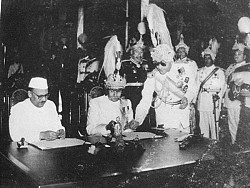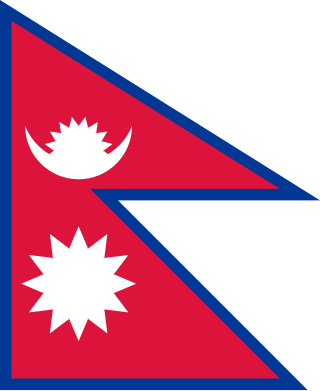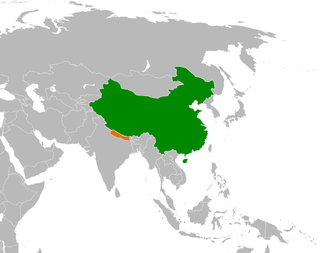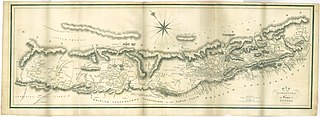
The history of Nepal is intertwined with the history of the broader Indian subcontinent and the surrounding regions, comprising the areas of South Asia and East Asia.

Though the Ministry of Foreign Affairs (MOFA) is the government agency responsible for the conduct of foreign relations of Nepal, historically, it is the Office of Prime Minister (PMO) that has exercised the authority to formulate and conduct policies related to Nepal's foreign affairs. As a landlocked country wedged between two larger and far stronger powers, Nepal has tried to maintain good relations with both of its neighbors, People's Republic of China and Republic of India. Nepal's relationship with China, India, and the United States has remained utmost priority for successive Nepali governments. The relationship between Nepal and India however was significantly hampered during the 2015 Nepal blockade by pro-Indian anti-Nepal protestors, where the Government of Nepal accused India of using "Russia-Ukraine" tactics to cause unrest along Nepal's southern border using ethnically Indian residents of Nepal. India strictly denied the allegation and said the unrest were solely due to Madheshi protesters. For the most part though, Nepal has traditionally maintained a non-aligned policy and enjoys friendly relations with its neighboring countries and almost all the major countries of the world.

The Kingdom of Nepal, also known as the Gorkha Empire or Asal Hindustan (transl. Real Land of the Hindus), was a Hindu kingdom in South Asia, formed in 1768, by the unification of Nepal. Founded by King Prithvi Narayan Shah, a Gorkha monarch who claimed to be of Khas Thakuri origin, it existed for 240 years until the abolition of the Nepalese monarchy in 2008. During this period, Nepal was formally under the rule of the Shah dynasty, which exercised varying degrees of power during the kingdom's existence.
The Five Principles of Peaceful Coexistence are the Chinese government's foreign relations principles first mentioned in the 1954 Sino-Indian Agreement. Also known as Panchsheel, these principles were subsequently adopted in a number of resolutions and statements, including the preamble to the Constitution of the People's Republic of China.

The Treaty of Sugauli, the treaty that established the boundary line of Nepal, was signed on 4 March 1816 between the East India Company and Guru Gajraj Mishra following the Anglo-Nepalese War of 1814–16.

The 1950 India-Nepal Treaty of Peace and Friendship is a bilateral treaty signed by the Kingdom of Nepal and the Republic of India to establish a close strategic relationship between the two South Asian neighbours. The treaty was signed at Kathmandu on 31 July 1950 by the last Rana Prime Minister of Nepal Mohan Shumsher Jang Bahadur Rana and Indian ambassador to Nepal, Chadreshwar Narayan Singh and came into force the same day as per Article 9 of the Treaty. Rana rule in Nepal ended just 3 months after the treaty was signed. The treaty allows free movement of people and goods between the two nations and a close relationship and collaboration on matters of defense and foreign policy.

India–Nepal relations are the bilateral relations between India and Nepal. Both countries initiated their relationship with the 1950 Indo-Nepal Treaty of Peace and Friendship and accompanying secret letters that defined security relations between the two countries, and an agreement governing both bilateral trade and trade transiting Indian territory.

The following outline is provided as an overview of and topical guide to Nepal:

The bilateral relation between Nepal and China is defined by the Sino-Nepalese Treaty of Peace and Friendship signed on April 28, 1960, by the two countries. Though initially unenthusiastic, Nepal has been of late making efforts to increase trade and connectivity with China. Relations between Nepal and China got a boost when both countries solved all border disputes along the China–Nepal border by signing the Sino-Nepal boundary agreement on March 21, 1960, making Nepal the first neighboring country of China to agree to and ratify a border treaty with China. The government of both Nepal and China ratified the border agreement treaty on October 5, 1961. From 1975 onward, Nepal has maintained a policy of balancing the competing influence of China and Nepal's southern neighbor India, the only two neighbors of the Himalayan country after the accession of the Kingdom of Sikkim into India in 1975.

Nepal–Pakistan relations refer to the bilateral relations between Nepal and Pakistan, both Himalayan states located on the Indian subcontinent. After the Partition of British India in August 1947, Nepal moved to establish diplomatic relations with the Dominion of India, but did not do so with the Dominion of Pakistan. Official diplomatic ties did not exist between the two states until initial steps were taken on 29 March 1960; these relations were then fully established between 1962 and 1963. Both nations have since sought to expand their bilateral trade, strategic and military cooperation. In 1972, following Pakistan's defeat in the Bangladesh Liberation War and the secession of East Pakistan as the People's Republic of Bangladesh, Nepal recognized the latter's independence. Pakistan severed ties with Nepal shortly afterwards, but these were later re-established.
The Kalapani territory is an area under Indian administration as part of Pithoragarh district in the Kumaon Division of the Uttarakhand state, but it is also claimed by Nepal since 1997. According to Nepal's claim, it lies in Darchula district, Sudurpashchim Province. The territory represents part of the basin of the Kalapani river, one of the headwaters of the Kali River in the Himalayas at an altitude of 3600–5200 meters. The valley of Kalapani, with the Lipulekh Pass at the top, forms the Indian route to Kailash–Manasarovar, an ancient pilgrimage site. It is also the traditional trading route to Tibet for the Bhotiyas of Kumaon and the Tinkar valley of Nepal.

Greater Nepal is an irrendentist ideal of Nepal extending beyond its present boundaries to include current Indian and Bangladeshi territories. The territorial claims typically include the Nepali borders between 1791 and 1816, concluding with the signing of the Sugali Treaty at the end of the Anglo-Nepalese War, but not the parts of Tibet occupied by the Gorkha army during the Sino-Nepalese War of 1788–1792.

Neighbourhood First Policy of India, a core component of India's foreign policy, focuses on peaceful relations and collaborative synergetic co-development with its South Asian neighbours of the Indian subcontinent encompassing a diverse range of topics, such as economic, technology, research and education, connectivity, space program, defence security, environment and climate challenge. This policy creates new avenues as well as leverages existing regional cooperation initiatives, such as SAARC, SASEC, BBIN, and BIMSTEC. It compliments India's Look East policy focused on Southeast Asia and Look West Policy focused on Middle East.

The China–Nepal border is the international boundary between the Tibet Autonomous Region of the People's Republic of China and Federal Democratic Republic of Nepal. It is 1,389 kilometres (863 mi) in length and runs in a northwest–southeast direction along the Himalayan mountain range, including Mount Everest, the world's highest mountain. The boundaries of this particular border have changed dramatically over time, especially when considering relatively recent events such as the Annexation of Tibet in 1949. However, some of the most significant developments of modern times would be the signing of the "Agreement on Maintaining Friendly Relations between the People’s Republic of China and the Kingdom of Nepal" in 1956 and the "Sino-Nepalese Treaty of Peace and Friendship" in 1960, both of which formally recognised Tibet as a part of China and confirmed the limits of the countries of China and Nepal as they are known today.

The 2015 Nepal blockade, which began on 23 September 2015 and lasted about six months, was an economic and humanitarian crisis which severely affected Nepal and its economy.
Bhadrakali Mishra was a Nepali politician. In his political career lasting more than 50 years, several of which were in exile, he held numerous ministerial portfolios and was also the Chairman of King Birendra's Raj Parishad Standing Committee after the establishment of multi-party democracy in 1990.

The India-Nepal border is an open international boundary running between the India and Nepal. The 1,770 km (1,099.83 mi) long border includes the Himalayan territories as well as Indo-Gangetic Plain. The current border was delimited after the Sugauli treaty of 1816 between Nepal and the British Raj. Following Indian independence, the prevailin border was recognised as the international border between the Kingdom of Nepal and the Dominion of India.

Nepal–Turkey relations are the foreign relations between Nepal and Turkey. Bilateral diplomatic relations were established in 1962. The Turkish ambassador to India in New Delhi is accredited to Nepal and the Embassy of Nepal in Islamabad is accredited to Turkey.
The 1954 Sino-Indian Agreement, also called the Panchsheel Agreement, officially the Agreement on Trade and Intercourse Between Tibet Region of China and India, was signed by China and India in Peking on 29 April 1954. The preamble of the agreement stated the panchsheel, or the five principles of peaceful coexistence, that China proposed and India favoured. The agreement reflected the adjustment of the previously existing trade relations between Tibet and India to the changed context of India's decolonisation and China's assertion of suzerainty over Tibet. Bertil Lintner writes that in the agreement, "Tibet was referred to, for the first time in history, as 'the Tibet Region of China'".

This article is about territorial disputes of the People's Republic of China (PRC). A territorial dispute is a disagreement over the possession or control of land between two or more political entities. Many of these territorial disputes are almost identical to those that the Republic of China (ROC) government based in Taipei, also known as Taiwan, has with other countries. Therefore, many of the subsequent resolved disputes made by the PRC after 1949 with other governments may not be recognised by the ROC.
















